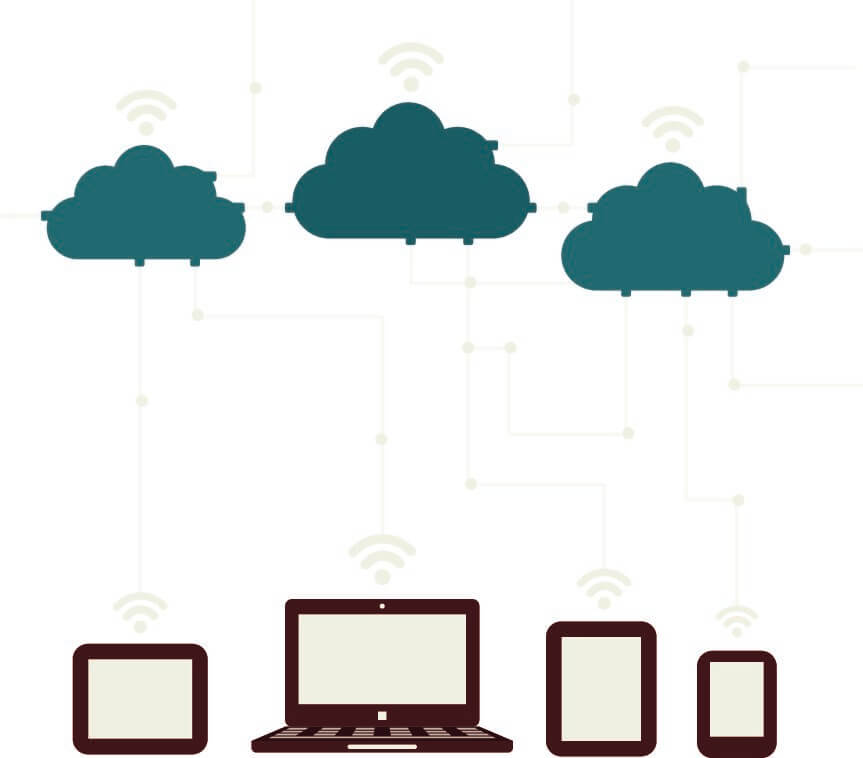AMAZON WEB SERVICES TO SPONSOR EDUCATION’S “OSCARS”
HOW VIRTUAL LABS ARE REVOLUTIONIZING SCIENCE EDUCATION

Charley Rogers investigates the ups and downs of BYOD, and how bringing your own device to school leaves space for flexible learning
Bring Your Own Device (BYOD) programmes have been gaining popularity in the workplace since companies such as Intel encouraged their use among employees as early as 2009. The idea really took off in around 2011 when more notice of the emerging trend was taken by big players in the industry, such as Unisys and Citrix Systems.
However, despite the enthusiasm of the business world in adopting BYOD, results of a survey undertaken by LAN3 at the end of 2017 revealed that although 41% of schools surveyed have identified BYOD as a key area to prioritise for implementation over the next two years, only 29% of secondary schools have yet to deliver BYOD models.
So what is holding educators back? Surely it makes sense for secondary schools and universities to implement BYOD, especially since, as mentioned by Pete Hannah, Head of Channel UK&I at wireless solutions experts Zyxel: “It’s estimated that 86% of 12 to 15-year-olds in the UK regularly use mobile phones, compared to 69% in 2014.”
There are, of course, many elements to the decision process for BYOD implementation, and these must all be examined at length before any final conclusion is reached.
SECURITY
One of the most prominent of these considerations for administrators and decision-makers is security. With BYOD, there is a hugely increased risk in online security due to the fact that students need to have their device connected to the school or university’s main network, and as such the opportunity for the spreading of viruses is much larger. Especially with the introduction of GDPR this past May, institutions need to be particularly careful in monitoring what data they capture, and the access available from all connected devices.
A report from European Schoolnet published in October 2017 commented that: “Increased use of Wi-Fi in more areas in and around a school means increased risks to the network due to naïve, malicious or selfish actions by people within or external to the school.” And with the increased demand for connectivity from teenagers in the UK, these ‘malicious or selfish actions’ are more likely than ever.
So how can schools ensure that BYOD is more of a help than a hindrance? A report from LAN3 back in 2016 suggested that ‘with a proper plan in place, and support from experts if needed, BYOD can be straightforward to implement and brings many benefits with it.’ Planning is certainly an essential part of implementing a BYOD programme, and this must include security considerations. This needs to happen at the network layer, says Simon Wilson, CTO UK&I at HPE Aruba: “Threats come from inside and out, and Wi-Fi coverage must protect internal assets, block malware, support guest access, and isolate sensitive traffic from the rest of the networks.”
“With a BYOD approach, educational institutions are helping transform the learning experience into something that aligns with the way the kids live the rest of their lives.”
This is definitely true of universities, which hold a lot of data. Matthew Green, Client Director for Higher Education at Insight UK, explained: “On average, UK universities hold data on 15,000 to 18,000 students, many of whom use their own devices to connect to the university network. This significantly raises the risk of connecting an infected device to the network.” There are, however, systems that can ensure that a BYOD model does not jeopardise university security, including providing clear guidelines to both students and staff on which software is safe for use. Matthew said: “Keeping the network free of malware is a joint effort, and it goes beyond the basics. In some cases, it might be best to provide licensed software that students can install on their devices.”
COST
If concerns about security can be dampened by well-designed network infrastructure and solid access systems including password-protection from each device, there is inevitably a significant cost involved for the school or university that is hoping to implement this system. BYOD, however, represents much lower costs in terms of hardware, and resources such as printing and textbook purchase. Recent comment from tech company Barco suggested that despite Sir Matt Hancock’s call to ban mobile phones in schools this June, BYOD has proven to enable heightened concentration from students, and that these decisions are not ones to be taken lightly.
This comment was punctuated by the comparison to the UK-wide rollout of interactive screens: “The move from blackboards to digital screens has put pressure on school budgets, especially as studies have shown pupils become disengaged unless the set-up is just right.”
But what are the true cost considerations of BYOD in the classroom? Although students bringing their own devices to class significantly reduces the cost of investing in hardware, the infrastructure of the institution still needs to be able to support access for these devices, and hosting learning materials in many different formats, including not only text files but also video and audio. Simon Wilson, CTO UK&I at HPE Aruba, commented that: “Robust connectivity is critical in a classroom environment, but being able to extend wireless connectivity across a campus or grounds without sacrificing feature richness, affordability and ease of use is essential too.”
Pete Hannah at Zyxel also agreed that cost is a serious consideration, even for BYOD. He said: Secondary schools are still finding themselves struggling to deliver the consistent and secure service that students and teachers need, due to IT networks which are not fit for purpose.”
Once networks are up to scratch, however, additional costs of BYOD are very little. More focus on investing in relatively cheap software replaces expensive hardware, as Ronny Dewaele, Director Technology Centre at Barco, suggested: “Schools and universities should be able to provide a more engaging environment for students without big investments, and to do that, they must think about less hardware and more software.”

LEARNING OUTCOMES
Engaging students is, of course, the main aim of BYOD, as of all the new learning models. Despite some commentators’ fears about the negative effects of smartphones in the classroom, they are a very common tool for BYOD models, and are ideal for student use, as young people – largely – are already familiar with how they work. Ronny added: “If students are going to bring their devices to the classroom anyway, why not use the available technology to your own advantage, and keep investment costs in new classroom technology down?”
So why does BYOD provide more engagement for students? Simon Wilson suggested that the flexibility of access that BYOD provides, and the familiar format of accessing material from a handheld device, rather than lugging around a somewhat anachronous backpack full of books, appeals to pupils: “With a BYOD approach, educational institutions are helping transform the learning experience into something that aligns with the way the kids live the rest of their lives – on a smartphone.”
But it is not only the convenience of the format that appeals to both students and educators. Brunel University have recently adopted the model for exams, and Professor Mariann Rand-Weaver, Vice-Provost (Education) at the University, said: “Teaching is increasingly interactive with students accessing information and resources on their devices, and the use of mobiles for quizzes and in-class tests is allowing interaction even in large classes.”
BYOD, then, is certainly a model that can be implemented with only moderate tweaks to a university or school. The main issue is planning, especially of infrastructure and support, but once this is in place, students not only have the freedom to bring their own device, but are afforded the space for a flexible and enthusiastic approach to their learning – surely much more precious cargo than books and pencils.
ABOUT EDUCATION TECHNOLOGY
A free, subscription-only bi-monthly magazine featuring the latest edtech news, opinion, and event reviews from across the education sector, including primary and secondary schools, further and higher education.
Education Technology is part of the Edquarter Hub, a cross-education learning platform for the schools and higher education sector.
Edquarter is produced by Wildfire Comms, a multi-media publisher and agency based in Paintworks, Bristol’s creative quarter.

